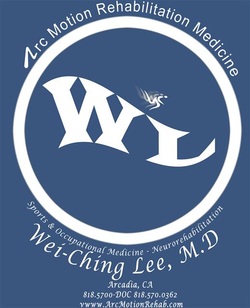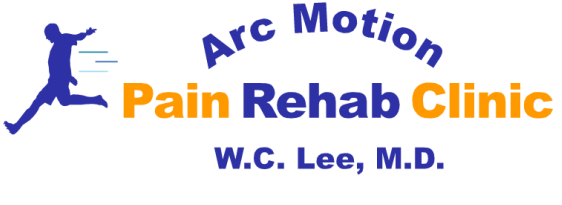_Choose to Move: Physician help in overcoming fitness obstacles

_(From AAPMR)
Our bodies were made to move. Regular physical activity is good for just about everything – your heart, your muscles, bones and joints, your waistline and your mood. But while most of us know we should exercise, many of us just don’t do it. If you’re one of the many Americans with some kind of physical limitation, getting regular exercise is tougher still. But it’s even more important to your health.
A physical medicine and rehabilitation (PM&R) physician, also called a physiatrist, is a doctor who can help you plan and stick to an exercise program that’s safe and effective. A physiatrist specializes in bone and muscle health, therapeutic exercise and helping people with pain or limited mobility regain maximum physical function.
Consider seeing a PM&R physician if exercise is difficult for you because:
Why a Physical Medicine & Rehabilitation (PM&R) physician?
PM&R physicians (physiatrists) are trained to provide a full spectrum of care, from diagnosis to treatment and rehabilitation. In addition to medical training in conditions of the bones, joints, brain and nervous system, physiatrists have special expertise in therapeutic exercise. They are uniquely qualified to treat conditions that require lifestyle management and coordinated care. They treat the whole person, focusing on helping patients understand and take control of their health. PM&R physicians use a team approach to care, often working with other physicians, such as neurologists and orthopaedic surgeons, and health professionals such as physical and occupational therapists.
Along with therapeutic exercise, a physiatrist may prescribe one or several non-surgical treatments, such as
What a PM&R physician can do for you
Getting started A PM&R physician will thoroughly assess your condition, needs and expectations, and rule out any serious medical illnesses to develop a treatment plan. A clear understanding of your condition and limitations will help you and your physiatrist develop a treatment plan suited to your unique needs.
Tailoring your planYou need the right type of exercise to effectively overcome fitness obstacles. A runner may have gained weight after being sidelined by a knee injury. A physiatrist can prescribe tailored low impact activities that burn calories without aggravating the injury, simultaneously prescribing physical therapy and use of a brace to strengthen and support the knee. Another patient may be suffering from chronic neck pain. The physiatrist might prescribe medication, stretching and massage for short-term pain relief, and core strengthening exercises to prevent future pain.
Understanding and identifying your goals. Do you want to lose weight, strengthen an injured muscle, walk up the stairs without being winded, or run a 10K? A PM&R physician can work with you to determine, and reach, realistic short and long-term goals. Along the way, he or she will help you achieve your successes, overcome your setbacks and reassess your goals if necessary.
Keeping you motivated.Exercise programs don’t have to rely on fancy equipment or expensive health club memberships. But they do require regular commitment. A physiatrist can increase your odds of success by working with you to develop an exercise plan that fits your schedule and interests. It might be regular walks or bike rides in the neighborhood or classes at a local hospital or a health club. Your PM&R physician also may ask you to keep an activity log to help evaluate and adjust prescribed exercises as needed to deliver the greatest benefit. Keeping a daily log encourages you to monitor your efforts and results, putting you in charge of your own health and helping you stay motivated.
Our bodies were made to move. Regular physical activity is good for just about everything – your heart, your muscles, bones and joints, your waistline and your mood. But while most of us know we should exercise, many of us just don’t do it. If you’re one of the many Americans with some kind of physical limitation, getting regular exercise is tougher still. But it’s even more important to your health.
A physical medicine and rehabilitation (PM&R) physician, also called a physiatrist, is a doctor who can help you plan and stick to an exercise program that’s safe and effective. A physiatrist specializes in bone and muscle health, therapeutic exercise and helping people with pain or limited mobility regain maximum physical function.
Consider seeing a PM&R physician if exercise is difficult for you because:
- An accident, injury or chronic condition has left you with pain or limited function
- You’re contemplating or recovering from surgery
- An illness such as cancer or its treatment has diminished your energy or ability to move easily
- You’re recovering from the effects of a stroke or other problems with nerve damage
- You have chronic pain from arthritis, repetitive stress injury or back problems
- Excess weight makes it difficult to exercise, or has caused health problems
- You think you’re too old to exercise
- Life changes such as childbirth or menopause have created new fitness challenges
- You have been told to exercise for your health but don't know how to get started
Why a Physical Medicine & Rehabilitation (PM&R) physician?
PM&R physicians (physiatrists) are trained to provide a full spectrum of care, from diagnosis to treatment and rehabilitation. In addition to medical training in conditions of the bones, joints, brain and nervous system, physiatrists have special expertise in therapeutic exercise. They are uniquely qualified to treat conditions that require lifestyle management and coordinated care. They treat the whole person, focusing on helping patients understand and take control of their health. PM&R physicians use a team approach to care, often working with other physicians, such as neurologists and orthopaedic surgeons, and health professionals such as physical and occupational therapists.
Along with therapeutic exercise, a physiatrist may prescribe one or several non-surgical treatments, such as
- Medications
- Injections
- Assistive devices such as a brace or artificial limb
- Physical therapy
- Heat and cold therapy
- Massage
- Acupuncture
- Biofeedback and electrotherapies
What a PM&R physician can do for you
Getting started A PM&R physician will thoroughly assess your condition, needs and expectations, and rule out any serious medical illnesses to develop a treatment plan. A clear understanding of your condition and limitations will help you and your physiatrist develop a treatment plan suited to your unique needs.
Tailoring your planYou need the right type of exercise to effectively overcome fitness obstacles. A runner may have gained weight after being sidelined by a knee injury. A physiatrist can prescribe tailored low impact activities that burn calories without aggravating the injury, simultaneously prescribing physical therapy and use of a brace to strengthen and support the knee. Another patient may be suffering from chronic neck pain. The physiatrist might prescribe medication, stretching and massage for short-term pain relief, and core strengthening exercises to prevent future pain.
Understanding and identifying your goals. Do you want to lose weight, strengthen an injured muscle, walk up the stairs without being winded, or run a 10K? A PM&R physician can work with you to determine, and reach, realistic short and long-term goals. Along the way, he or she will help you achieve your successes, overcome your setbacks and reassess your goals if necessary.
Keeping you motivated.Exercise programs don’t have to rely on fancy equipment or expensive health club memberships. But they do require regular commitment. A physiatrist can increase your odds of success by working with you to develop an exercise plan that fits your schedule and interests. It might be regular walks or bike rides in the neighborhood or classes at a local hospital or a health club. Your PM&R physician also may ask you to keep an activity log to help evaluate and adjust prescribed exercises as needed to deliver the greatest benefit. Keeping a daily log encourages you to monitor your efforts and results, putting you in charge of your own health and helping you stay motivated.
